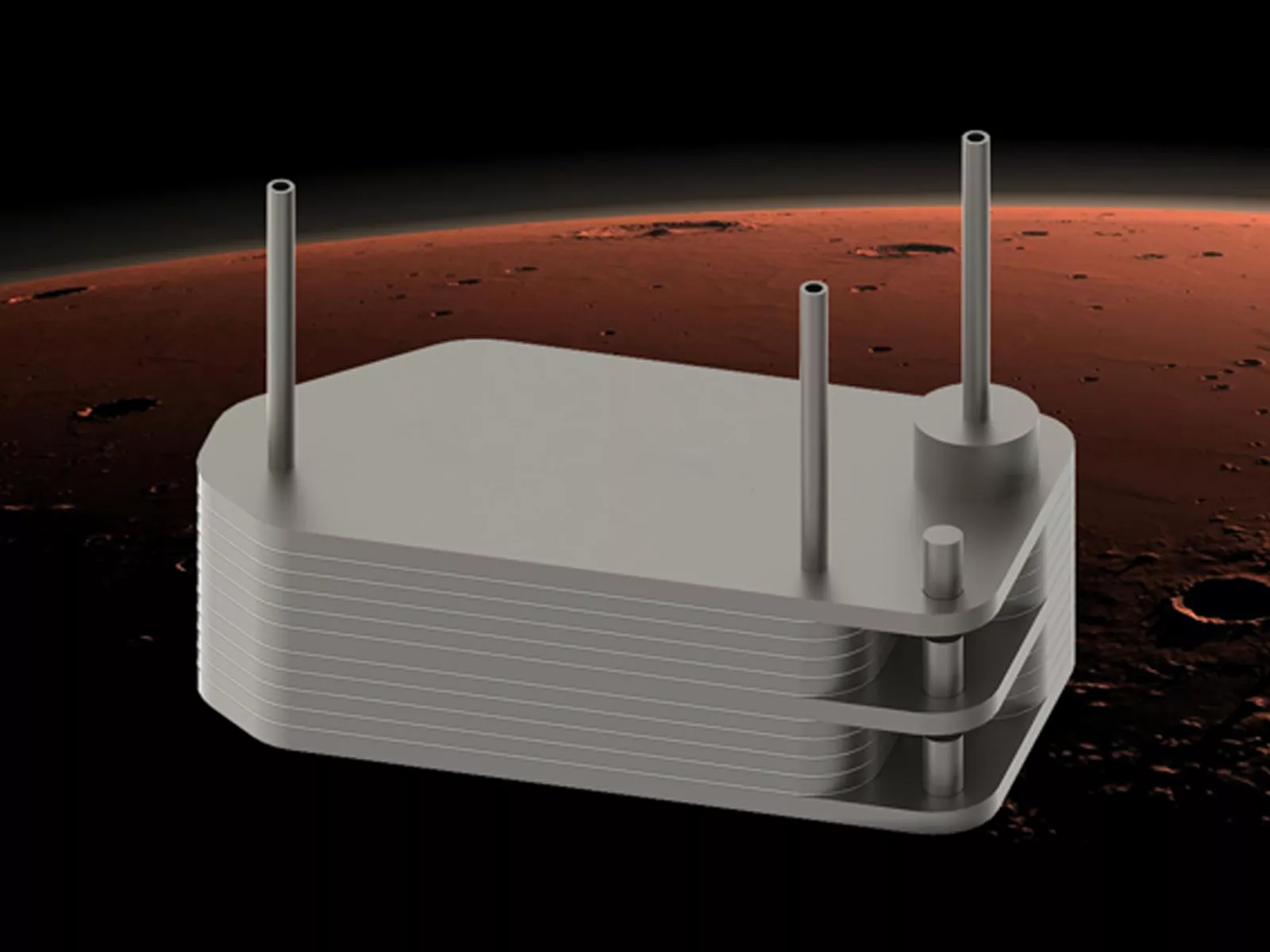
Andy Weir explains why an oxygen supply is the most important thing for a human expedition to Mars in his science-based novel and bestseller "The Martian", in which a Mars mission has to be aborted following a sandstorm. Unfortunately, a technician is left behind on Mars due to a tragic accident and he tries to survive on the planet until the next expedition arrives.
The most important thing that Marc Watney uses to stay alive is a system that is originally designed as a "fuel generator." This system condenses the rich supply of carbon dioxide in the Mars atmosphere and then converts it into oxygen. This is needed to ignite the fuel of a rescue capsule that could be used to recover the remaining crew from the Mars surface. However, it is also a vital component of breathable air.
Up to now, all trips to Mars have been one-way tickets and the crew has consisted of robots. NASA has still not come quite as far as what is depicted in the novel. However, it has taken a major step forward with the development of the MOXIE, a prototype for an "oxygen generator" at a scale of 1:100. This prototype was on board the "Perseverance," which landed successfully on Mars on Thursday, February 18, 2021.
MOXIE functions similarly to a fuel cell. The gas conversion takes place in a solid oxide electrolysis cell, a marvel resulting from the interaction of top quality materials and precise manufacturing. Plansee developed and produced the metal plates (interconnectors) required for this. These interconnectors help divert the gas into the cells where the carbon dioxide from the Mars atmosphere is converted into oxygen. This sounds simple enough, however this involved a lot of work for the Plansee researchers and developers. "Our experts brought all of Plansee's powder metallurgy know-how to bear in order to manufacture these highly complex components with maximum precision," says Karlheinz Wex, Board Spokesperson for the Plansee Group. It was a resounding success. If oxygen production begins on schedule in the coming months, MOXIE will produce 20 grams of oxygen per hour and complete a minimum of 50 work days on Mars.

